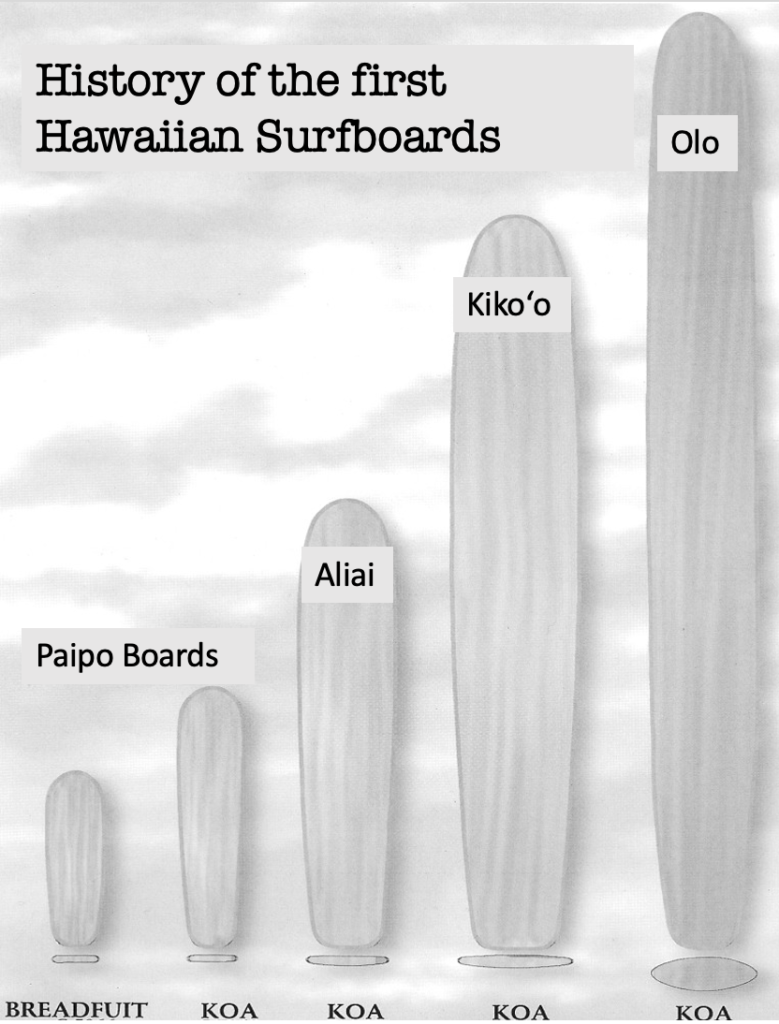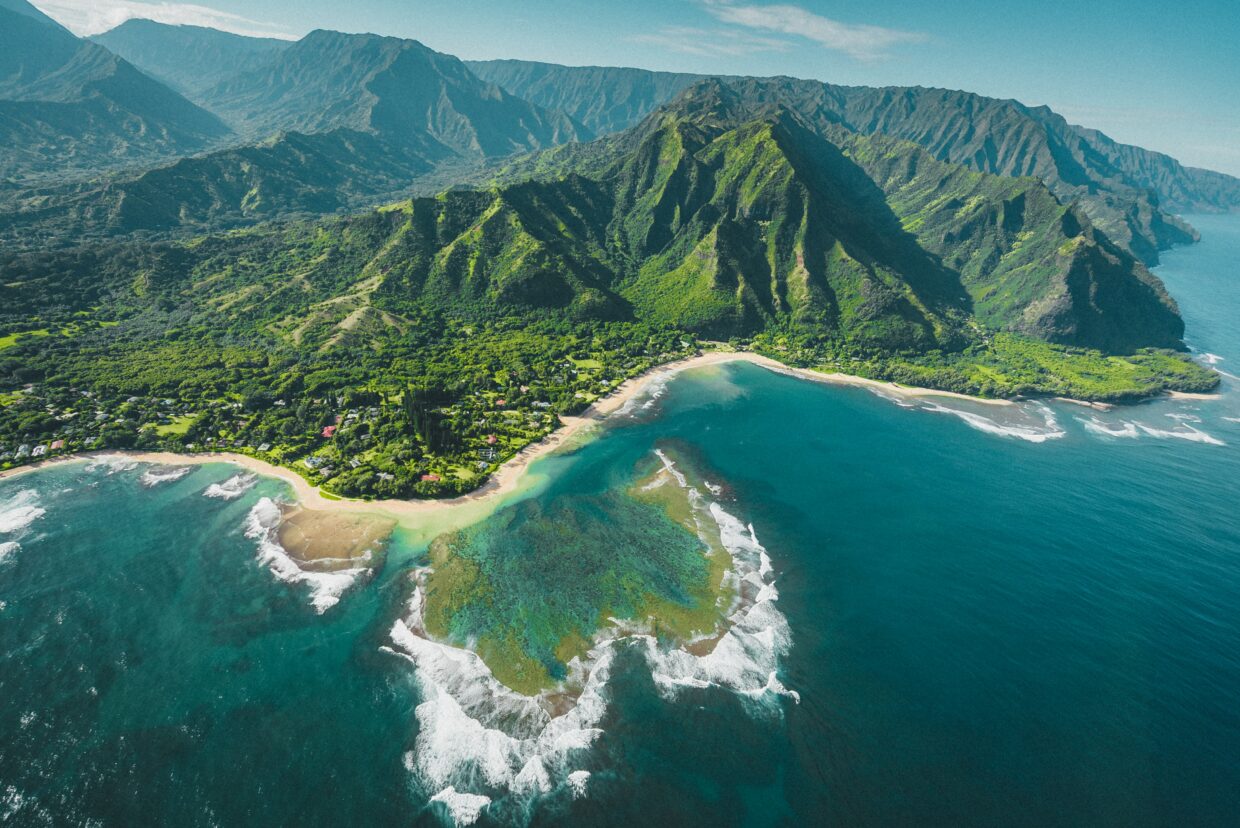As we know the first wave riding boards were made out of wood, specifically, Hawaiian Koa, Breadfruit, and Wiliwili trees. Indigenous Hawaiians would surf on four different types of boards, Olo boards, Kiko‘o boards, Alaia boards and Paipo boards.
Olo boards: The olo (O-lo) – a very long surfboard reserved for royalty that could be as long as 18-to-24feet in length.” These boards are up to two times as long as modern day longboards.
Kiko‘o boards: The kiko‘o (key-CO-oo) – a mid-range board larger than the alaia, but not as big as the biggest boards. The kiko‘o’s length was between 12 and 18 feet. It was good for bigger surf, but was hard to handle. Opposed to the Olo boards regular citizens were allowed to ride these boards. Kiko‘o boards are closest in resemblance to modern longboards; however, most modern longboards are in between 8-11 feet.
Alaia boards: The alaia (ah-LAI-ah) – a mid-sized board, usually 8 feet or longer. Alaia boards were the most commonly used boards. In shape and size they are similar to modern day short boards that can range from 5’ 5” – 8 feet. These boards were used to surf bigger and faster breaking waves.
Paipo boards: The paipo (pipe-oh) or kioe – a body board, or belly board, from 2-to-4 feet long, usually used by children in the prone position. These boards are most similar to modern day boogie boards.
Opposed to modern-day surfboards the traditional Hawaiian surfboards did not have any sort of fins.

